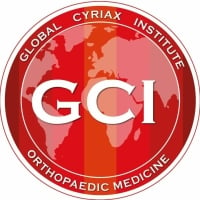Greater trochanter pain syndrome: confusing?
Diagnostic Confusion Surrounding Greater Trochanteric Pain Syndrome (GTPS)
Greater Trochanteric Pain Syndrome (GTPS) is a common cause of lateral hip pain, particularly in middle-aged women and physically active individuals. Despite its prevalence, GTPS presents significant diagnostic challenges due to its complex etiology, overlapping symptoms with other conditions, and evolving understanding of its pathology.
What is GTPS?
GTPS is an umbrella term encompassing a spectrum of disorders involving the lateral aspect of the hip, particularly around the greater trochanter. Historically thought to be primarily due to trochanteric bursitis, recent studies have shown that most cases are instead related to gluteal tendinopathy, particularly of the gluteus medius and minimus tendons. Other contributors can include iliotibial band (ITB) irritation or tears, external coxa saltans (snapping hip), and referred pain from the lumbar spine.
Causes of Diagnostic Confusion
- Non-specific Symptoms
Lateral hip pain, tenderness over the greater trochanter, and pain when lying on the affected side are hallmark symptoms, but they are non-specific and can mimic or co-occur with lumbar radiculopathy, osteoarthritis, or even intra-articular hip disorders. - Imaging Challenges
MRI and ultrasound can reveal tendinopathy or bursitis, but these findings do not always correlate with clinical symptoms. Conversely, imaging can appear normal despite significant pain, particularly in early stages of gluteal tendinopathy. - Overlap with Other Conditions
GTPS often occurs alongside or is mistaken for conditions like iliotibial band syndrome, lumbosacral radiculopathy, or hip osteoarthritis. This overlap complicates the diagnostic process, requiring a thorough clinical and functional assessment.
Toward a Better Diagnostic Approach
Accurate diagnosis of GTPS hinges on a detailed patient history and targeted physical examination, including specific maneuvers such as resisted hip abduction and palpation over the greater trochanter. Functional assessments, like the single-leg stance test or the FABER (Flexion, Abduction, and External Rotation) test, can aid differentiation.
Clinicians should also consider co-existing spinal or intra-articular pathology and use imaging judiciously to confirm clinical suspicions rather than as a primary diagnostic tool.
Conclusion
GTPS is a multifactorial condition often misdiagnosed due to historical misconceptions, symptom overlap, and variable imaging findings. A modern, patient-centered diagnostic approach—emphasizing gluteal tendinopathy over isolated bursitis and incorporating a broad differential diagnosis—is essential for effective treatment and improved patient outcomes.
